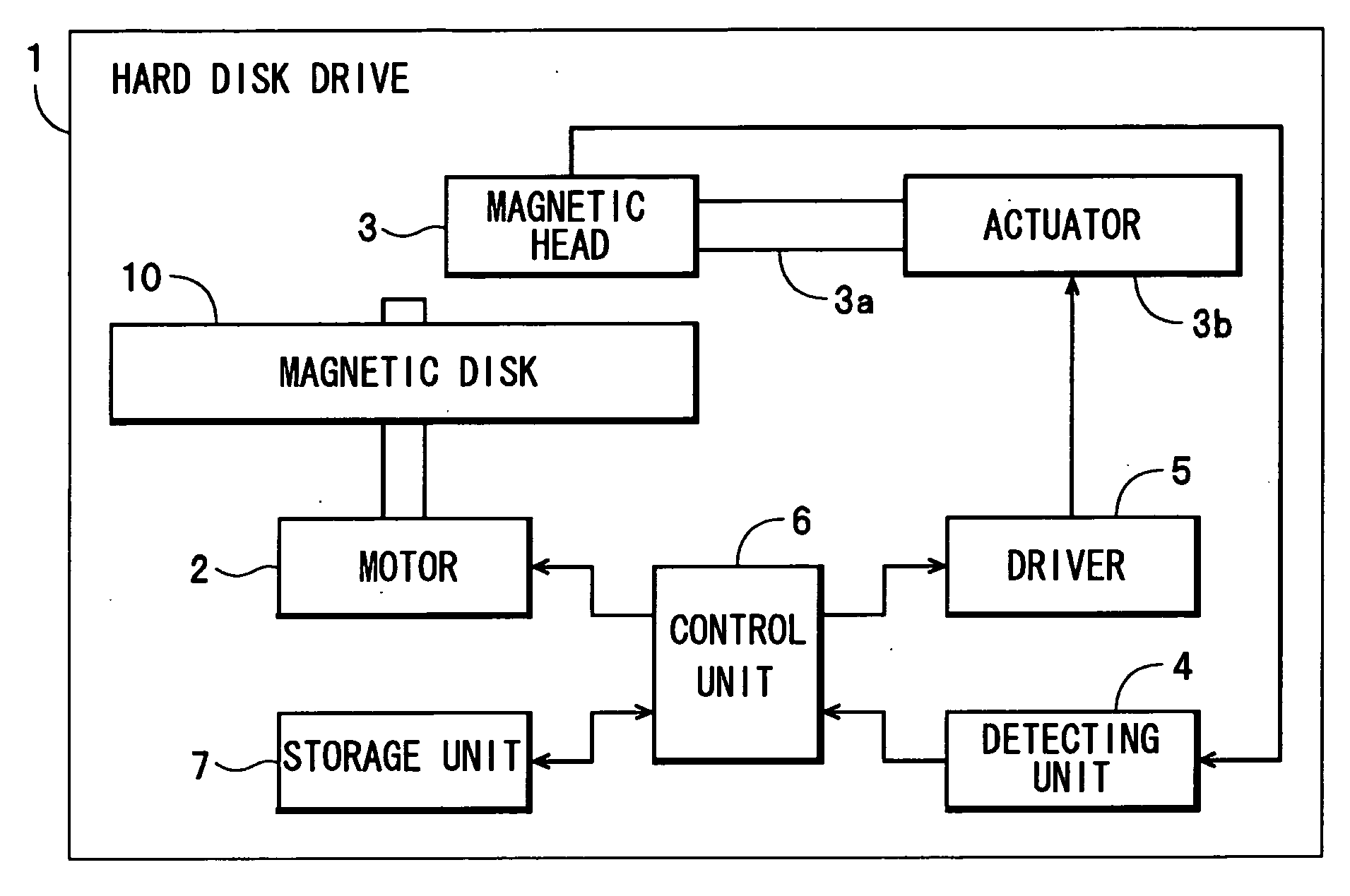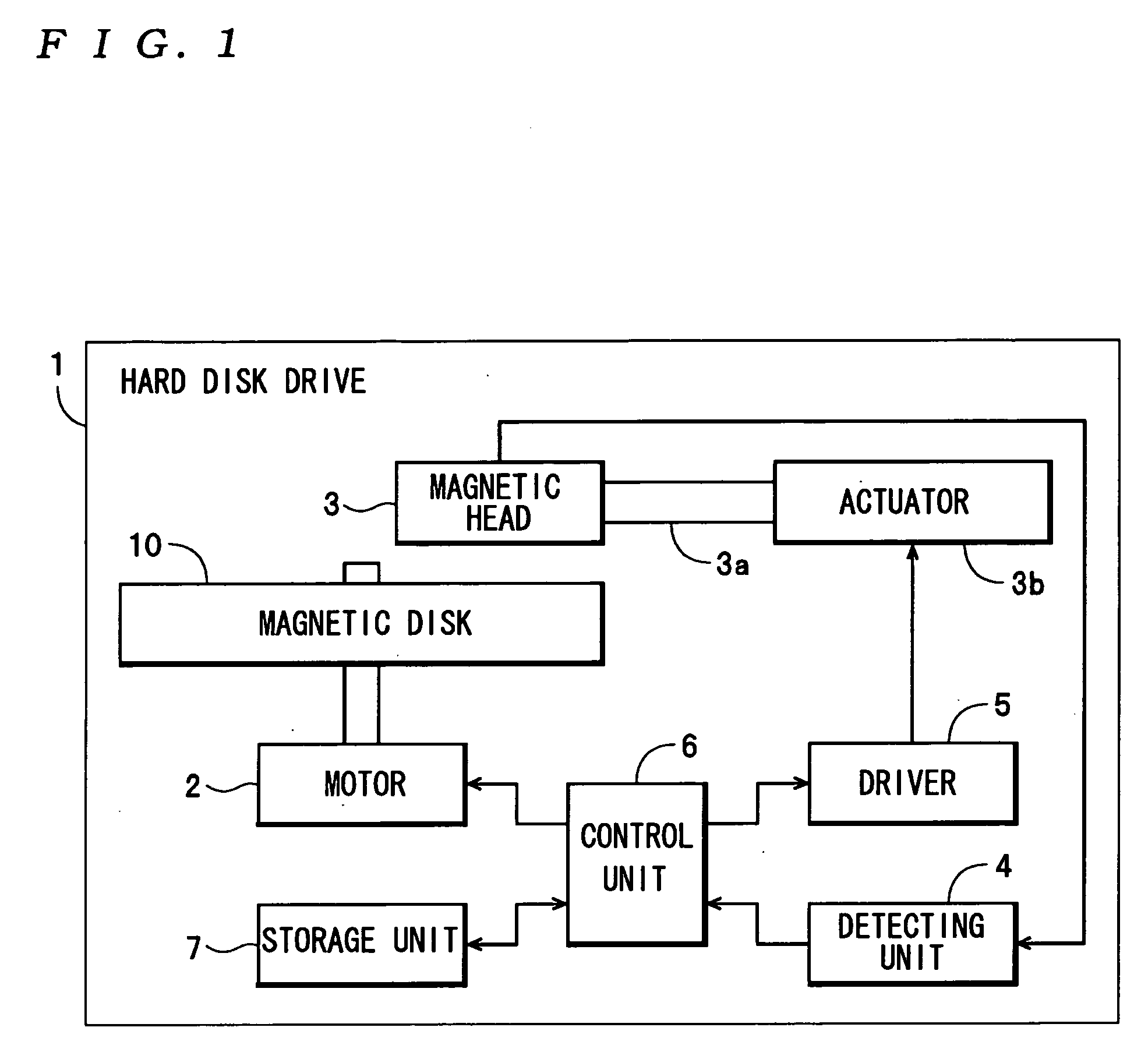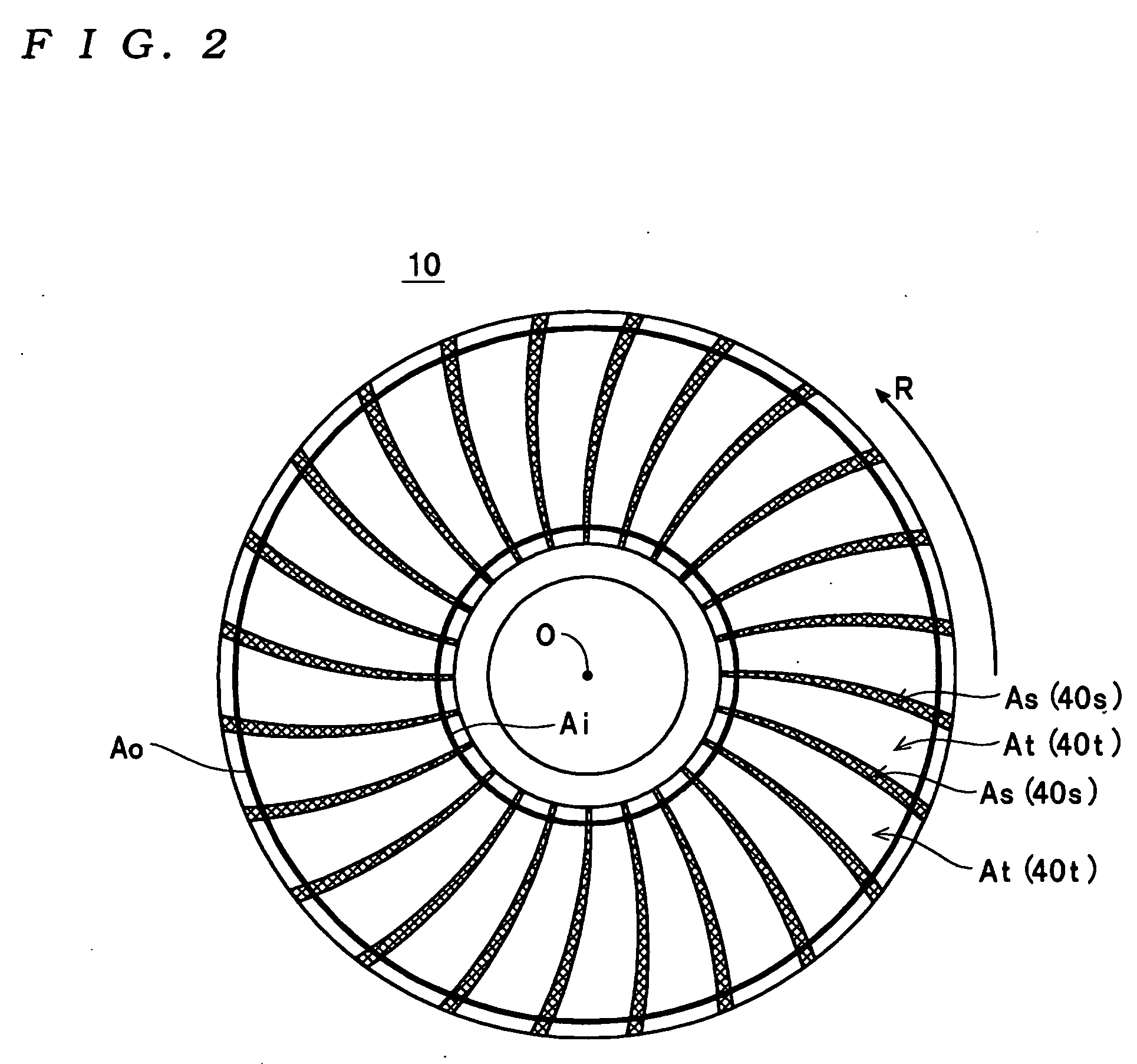Magnetic recording medium, recording/reproducing apparatus, and stamper
a recording medium and stamper technology, applied in the field of magnetic recording medium, recording/reproducing apparatus, stamper, etc., can solve the problems of insufficient pressing of concave/convex parts (of the stamper) into the resin layer, difficulty in reliably reading magnetic signals, and insufficient concave/convex parts of the stamper
- Summary
- Abstract
- Description
- Claims
- Application Information
AI Technical Summary
Benefits of technology
Problems solved by technology
Method used
Image
Examples
Embodiment Construction
[0059] Preferred embodiments of a magnetic recording medium, a recording / reproducing apparatus, and a stamper according to the present invention will now be described with reference to the attached drawings.
[0060] A hard disk drive 1 shown in FIG. 1 is one example of a recording / reproducing apparatus according to the present invention and includes a motor 2, a magnetic head 3, a detecting unit 4, a driver 5, a control unit 6, a storage unit 7, and a magnetic disk 10 so as to be capable of recording and reproducing various kinds of data. According to control by the control unit 6, the motor 2 rotates the magnetic disk 10 at a fixed speed, for example, 4200 rpm. The magnetic head 3 is attached to an actuator 3b via a swing arm 3a and is caused to move above the magnetic disk 10 by the actuator 3b during the recording and reproducing of data on the magnetic disk 10. Also, the magnetic head 3 carries out the reading of servo data from a servo pattern region As of the magnetic disk 10 (...
PUM
| Property | Measurement | Unit |
|---|---|---|
| lateral size | aaaaa | aaaaa |
| thickness | aaaaa | aaaaa |
| thickness | aaaaa | aaaaa |
Abstract
Description
Claims
Application Information
 Login to View More
Login to View More - R&D
- Intellectual Property
- Life Sciences
- Materials
- Tech Scout
- Unparalleled Data Quality
- Higher Quality Content
- 60% Fewer Hallucinations
Browse by: Latest US Patents, China's latest patents, Technical Efficacy Thesaurus, Application Domain, Technology Topic, Popular Technical Reports.
© 2025 PatSnap. All rights reserved.Legal|Privacy policy|Modern Slavery Act Transparency Statement|Sitemap|About US| Contact US: help@patsnap.com



